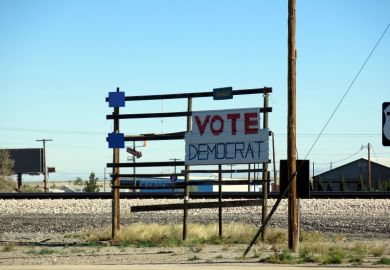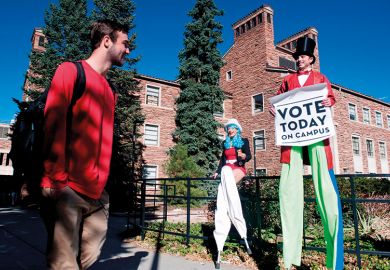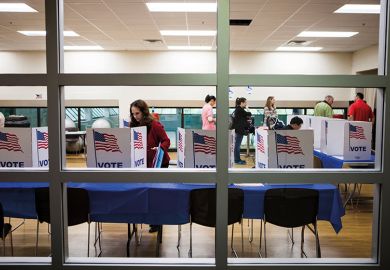Canada is moving ahead with this month’s federal election without the network of on-campus polling stations that it operated in the two previous elections, concluding that helping the sick and elderly is a bigger pandemic-era priority.
Government officials described their Vote on Campus programme as a boost to student turnout in the 2015 and 2019 elections that they expected to resume in the future, but could not implement this month amid both Covid and a snap election that gave them just five weeks to prepare.
“We had to make difficult choices,” said a spokesman for Elections Canada, the federal agency in charge of voting processes. “We know students face unique barriers to voting, and we remain committed to addressing those barriers at every opportunity.”
That answer was failing to satisfy more than 21,000 Canadian university students who signed a protest letter demanding that the Vote on Campus programme be revived for the 20 September nationwide poll.
“Our futures depend on what government leaders do now, and we have a right to a say in who our leaders are,” the protesting students say in their petition to Elections Canada.
Canada’s prime minister, Justin Trudeau, announced on 15 August the September election date – more than twice as early as necessary following the previous election in October 2019 – in an apparent bid to take advantage of public goodwill while Covid was in retreat and the economy rebounding.
That is now seen as backfiring on Mr Trudeau, with student anger just one potential problem. National polls have shown his Liberal party – already leading Canada without a majority in parliament – losing support sharply since the election announcement because of factors that include a history of corruption scandals and a sense of opportunism in his election timing.
Major issues for higher education in the election include calls for greater student financial aid and a bigger federal role in balancing out provincial budget cutbacks.
The effect of the Vote on Campus programme appeared positive, especially in its first year, 2015, when 57 per cent of eligible Canadian voters aged 18 to 24 cast a ballot, up more than 18 percentage points from 2011 levels. Then in 2019, according to Elections Canada data, student participation in the on-campus option shot up past 110,000, from 69,000 in 2015.
But it is not clear whether the programme generated substantial numbers of new voters or largely aided those already inclined to participate. That latter possibility is suggested by Elections Canada data showing that the number of voters aged 18 to 24 fell by 3 percentage points from 2015 to 2019, leaving the 2019 youth turnout a full 25 percentage points behind those aged 65 to 74.
The pandemic helped Elections Canada decide that it should prioritise helping “vulnerable electors such as those who live in care homes and are confined to their facility”, the agency said.
The ultimate effect of that trade-off is difficult to assess, said Semra Sevi, a voting behaviour researcher at Columbia University who earned her doctorate at the University of Montreal.
But Dr Sevi said her past work has identified the 18-24 age group as an exception to the majority of Canadians, “who find it very easy to vote”.
“We know from existing research that their turnout is lower by perceived burdens,” she said of younger voters. “We really need to target this group of voters first and foremost.”
Register to continue
Why register?
- Registration is free and only takes a moment
- Once registered, you can read 3 articles a month
- Sign up for our newsletter
Subscribe
Or subscribe for unlimited access to:
- Unlimited access to news, views, insights & reviews
- Digital editions
- Digital access to THE’s university and college rankings analysis
Already registered or a current subscriber?








